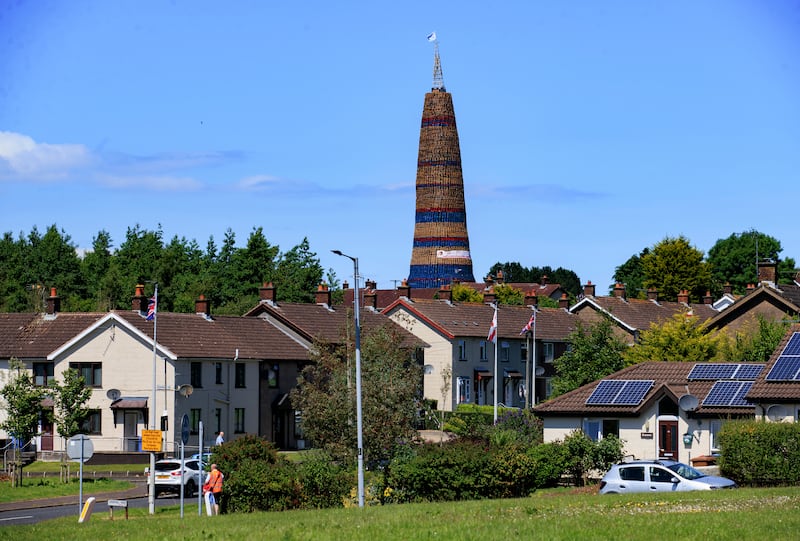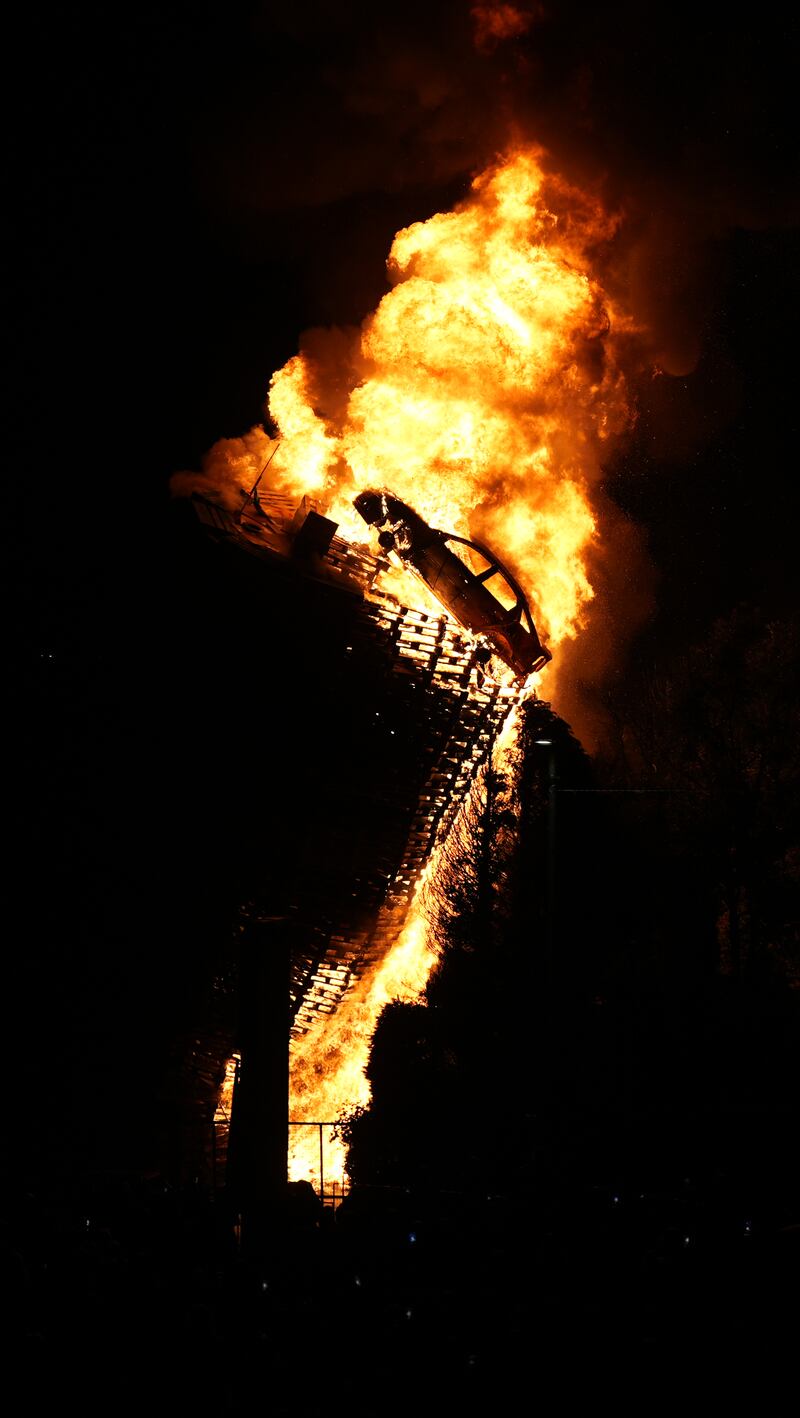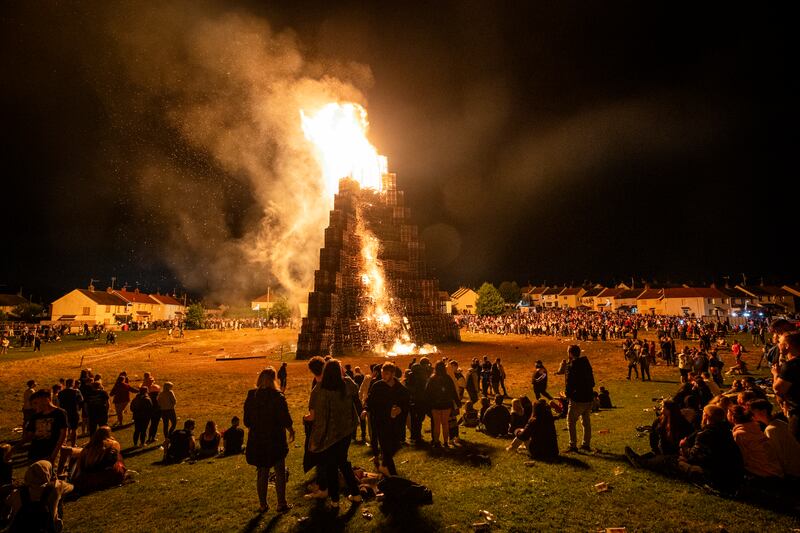Waking up on July 12th to the smell of the embers of a bonfire is like Christmas morning for one north Belfast woman.
“That smoky smell of the aftermath of the Eleventh night ... I love it,” said Claire, from the loyalist Tiger’s Bay area.
Now in her early 40s, Claire does not wish to give her surname due to sectarian tensions at the interface area. Three years ago a controversial bonfire on a site close to her home led to violent clashes and a ministerial intervention to remove the pyre.
Claire shrugs her shoulders when asked about health and safety concerns arising from harmful pollutants.
“When they had the tyres on it, yes, because the smell of it was disgusting. But now it’s only wood,” she says.
An estimated 300 bonfires were lit across Northern Ireland on Thursday night in advance of the July 12th Orange Order marches to mark the victory of Protestant William III over Catholic James II at the Battle of the Boyne in 1690.

Jurgita Ovadnevaite, deputy director of the Ryan Institute Centre for Climate and Air Pollution Studies at University of Galway, said there remains a health risk from the burning of wood pallets as opposed to rubber tyres.
“People have this misconception that wood is natural – but the particles coming out when we burn the wood are very, very toxic. When it burns, nothing natural is coming out,” she said. “So you cannot say which one is more dangerous at this point actually, both are significantly affecting.”
The impact of dangerous air pollutants on those with respiratory health conditions, such as asthma, as well as young children and older people, should give rise to the greatest concern, she said.
[ Burning of mock police car in bonfire ‘wrong on every level’Opens in new window ]
Seven years ago, monitors recorded that air pollution over Belfast on bonfire night was more than double internationally accepted levels recommended by the World Health Organisation (WHO). The pollution began to rise after 10pm and peaked at midnight before dropping and peaking again at 6am.
“Bonfires emit very small particulates that in huge numbers can penetrate deep into our bodies, and not only the respiratory system, they can penetrate blood barriers which means it can travel to our brain,” said Prof Ovadnevaite.
The placement of a mocked-up police car on top of a towering bonfire in Co Tyrone – described as “performance art” by one loyalist blogger – garnered headlines in Northern Ireland’s media earlier this week.

Burning the silver Vauxhall Vectra, propped up on pallets and tyres, could potentially release a “significant amount of toxic chemicals”, the Galway-based scientist said.
Asked for its assessment on the impact of bonfire-related pollution, a spokesman for Stormont’s Department of Agriculture, Environment and Rural Affairs said there has been “no recent studies on Eleventh night bonfires”.
He said the department keeps “monitored air quality data under constant review”.
“To date, there has been no requirement to issue an air pollution alert that has been linked to bonfire nights.”
Emergency services also brace themselves for one of their busiest periods. The Northern Ireland Fire and Rescue Service (NIFRS) dealt with147 emergency 999 calls between 6pm on July 11th and 2am on July 12th last year.
There was widespread condemnation of Northern Ireland Ambulance Service (NIAS) staff being assaulted over an “unprecedented” six-hour period. Paramedics were punched, kicked, bitten and spat at one bonfire site while others had their lives threatened.
Only one bonfire-related death has been recorded over the past decade, that of John Steele (36) who died after falling 50ft as he helped build a giant pyre in Larne. The previous year, a teenager suffered serious burns after being engulfed in a fireball at an Eleventh night bonfire in Belfast.
By and large, the majority of injuries seen in hospital A&E departments on July 11th are linked to alcohol-related falls and assaults, said retired emergency consultant, Dr Sean McGovern. Usually, he said, the evening begins with an “eerie” quietness on the hospital floor. “Many people don’t go out – we don’t see the normal business.”
He said: “Probably from 11pm on, or before the bonfire was lit, we’d start to see drunken people who are injured.
“There are always sporadic burns from people being too close to a fire – somebody once ran through a fire but that was 20 years ago.
“To be honest, the busiest part of bonfire nights is assaults.”

Dr McGovern said his standout memory is from the early 1990s when he treated warring gang members.
“There was 35 people assaulted, it was different gangs fighting among themselves – the competitiveness between bonfire sites was unbelievable back then. I think that’s gone out of it now in recent years.”
Back in Tiger’s Bay, for Claire it’s a holiday period where her community “celebrate their culture”.
“When you’re raised in a certain area, you’re getting up on the Twelfth morning, you getting your new clothes on and you’re going out to see the bands ... you get that buzz,” she said. “It’s what I grew up with.”
- Sign up for push alerts and have the best news, analysis and comment delivered directly to your phone
- Join The Irish Times on WhatsApp and stay up to date
- Listen to our Inside Politics podcast for the best political chat and analysis



















